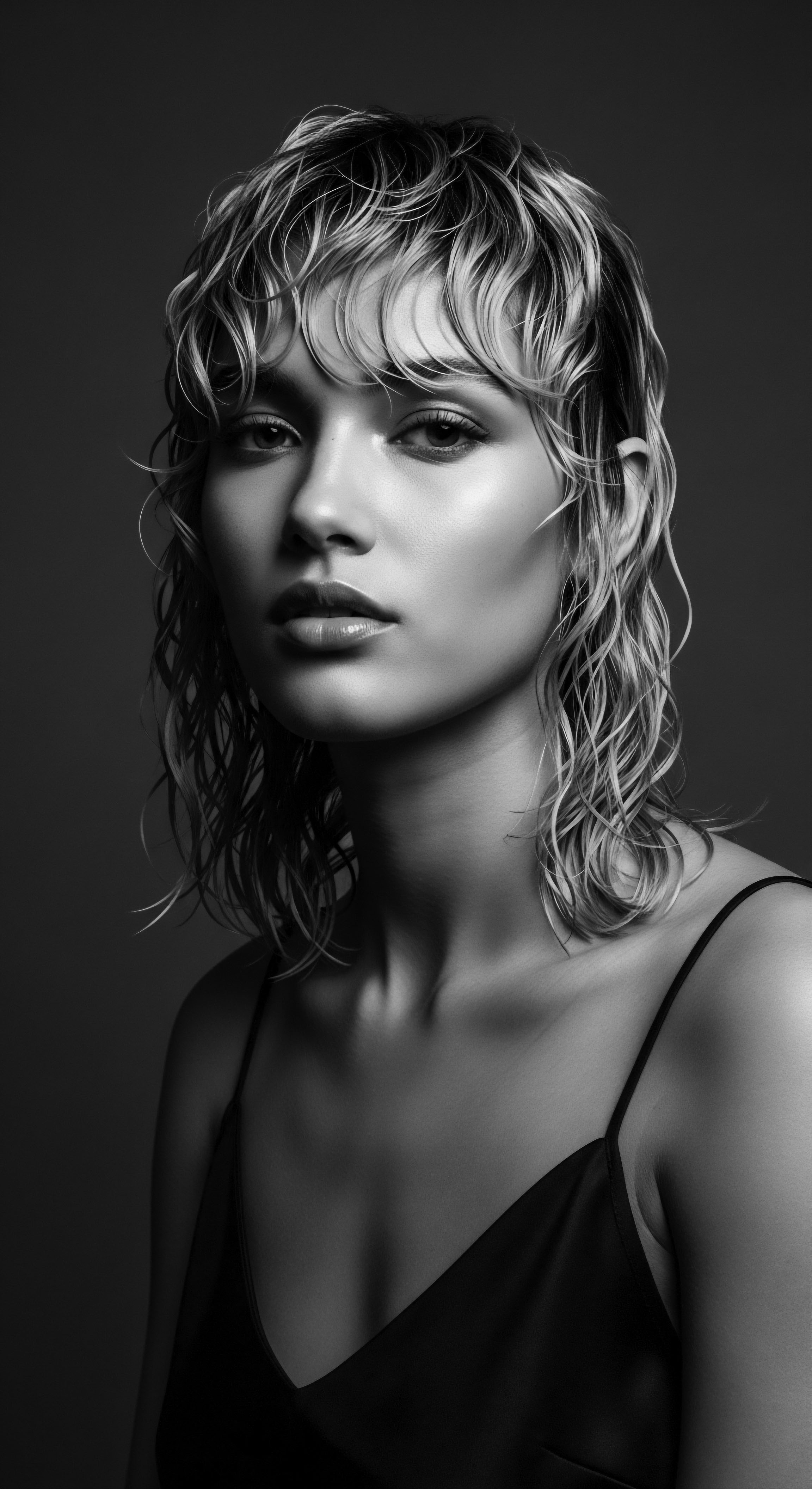
Roots
To truly comprehend the significance of the CROWN Act, one must listen to the whispers of ancient winds, tracing the lineage of textured hair through millennia. It is more than a legal decree; it represents a profound acknowledgment of a legacy etched into every curl, coil, and wave, a heritage that has resisted erasure and flourished against odds. For generations, hair has been a living archive, a sacred text, speaking volumes about identity, status, spirituality, and community. The journey of textured hair is one of resilience, a testament to ancestral knowledge and enduring beauty, a story that the CROWN Act now helps to safeguard within the contemporary legal landscape.
The very structure of textured hair, often perceived through a lens of misunderstanding, holds within it the blueprint of millennia. Scientifically, Afro-textured hair exhibits a unique elliptical cross-section and a retro-curvature at the hair bulb, resulting in an asymmetrical S-shaped follicle. This helical path makes it susceptible to mechanical stress at its bends, yet it possesses a natural strength in its bundled form, a testament to evolutionary adaptation. (Koch et al.
2019). This innate architecture, while leading to particular care needs, also contributes to its spectacular volume and sculptural versatility, features revered in ancient African societies.

How is Hair Anatomy Understood across Ancient Traditions?
Long before microscopes laid bare the intricate anatomy of a hair strand, ancestral communities possessed a profound understanding of hair as an extension of the self, often imbued with spiritual energy. In many West African societies, for example, hair communicated age, marital status, ethnic identity, religion, wealth, and community rank (Odele Beauty, 2021). The meticulous care and styling of hair were not mere cosmetic acts but essential rituals, strengthening community bonds and spiritual connections. The top of the head was frequently regarded as a point of entry for divine communication, meaning hair care became a sacred task, often entrusted to close relatives (Okan Africa Blog, 2020).
The history of hair typing systems themselves offers a window into the biases that the CROWN Act seeks to counteract. Early classifications often stemmed from anthropological attempts to categorize human populations, inadvertently creating hierarchies that favored straight hair as a norm. These systems, while seemingly objective, frequently perpetuated racialized beauty standards that sidelined the inherent beauty and diversity of textured hair (Shepherd, 2018). The CROWN Act, in protecting hair textures and styles commonly associated with race, directly challenges these historical and ongoing discriminatory classifications, asserting that every hair pattern holds inherent professionalism and dignity.
The CROWN Act’s true power lies in its affirmation of ancestral wisdom, acknowledging that the very texture of one’s hair is a sacred connection to heritage.
The lexicon of textured hair, both ancient and contemporary, reflects a rich cultural heritage. Words like ‘locs,’ ‘braids,’ ‘bantu knots,’ and ‘twists’ are not simply descriptions of hairstyles; they carry historical weight, cultural meaning, and embody stories of resistance and survival. These are the terms recognized and protected by the CROWN Act, signifying a legal validation of cultural markers that have long faced prejudice.
- Locs ❉ A style with spiritual roots in various African cultures, symbolizing a deeper connection to self and lineage.
- Bantu Knots ❉ Originating from the Bantu people of Southern Africa, these small, coiled buns are a declaration of cultural resilience.
- Cornrows ❉ Ancient braiding patterns, used historically for communication, social status, and even as maps for escape during enslavement.
- Afro ❉ A voluminous presentation of natural hair that became a powerful symbol of Black pride and resistance during the 1960s Civil Rights Movement.

What do Hair Growth Cycles Tell Us about Ancestral Influences?
The rhythm of hair growth, its anagen, catagen, and telogen phases, is universal. However, ancestral environments and historical nutritional factors profoundly shaped how these cycles were maintained. Traditional diets, often rich in specific nutrients from local flora, contributed to hair health, and indigenous practices like herbal rinses and natural oil applications supported optimal growth.
The forced displacement of enslaved Africans, however, severely disrupted these ancestral practices, cutting off access to native herbs, oils, and styling tools (Odele Beauty, 2021). This historical trauma imposed a new reality, where ingenuity and adaptation became essential for hair care, often relying on rudimentary materials or whatever could be found.
| Aspect of Hair Cultural Information |
| Ancestral Context (Pre-Diaspora) Signified tribal affiliation, social status, marital status, age, wealth, spiritual beliefs. |
| Modern Relevance (Post-CROWN Act) Continues to express identity, heritage, and pride; now protected against discrimination. |
| Aspect of Hair Care Practices |
| Ancestral Context (Pre-Diaspora) Utilized natural butters, herbs, and oils; communal styling rituals. |
| Modern Relevance (Post-CROWN Act) Reclamation of natural products and rituals; emphasis on holistic wellness. |
| Aspect of Hair Tools |
| Ancestral Context (Pre-Diaspora) Ancient combs, bone implements, natural fibers. |
| Modern Relevance (Post-CROWN Act) Modern tools designed for textured hair; historical afro combs as cultural symbols. |
| Aspect of Hair Spiritual Connection |
| Ancestral Context (Pre-Diaspora) Hair as a conduit for spiritual energy and communication with ancestors. |
| Modern Relevance (Post-CROWN Act) Hair remains a sacred part of self, embodying ancestral legacy. |
| Aspect of Hair The CROWN Act reinforces the enduring connection between textured hair and its rich ancestral meanings, acknowledging its role as a living cultural artifact. |
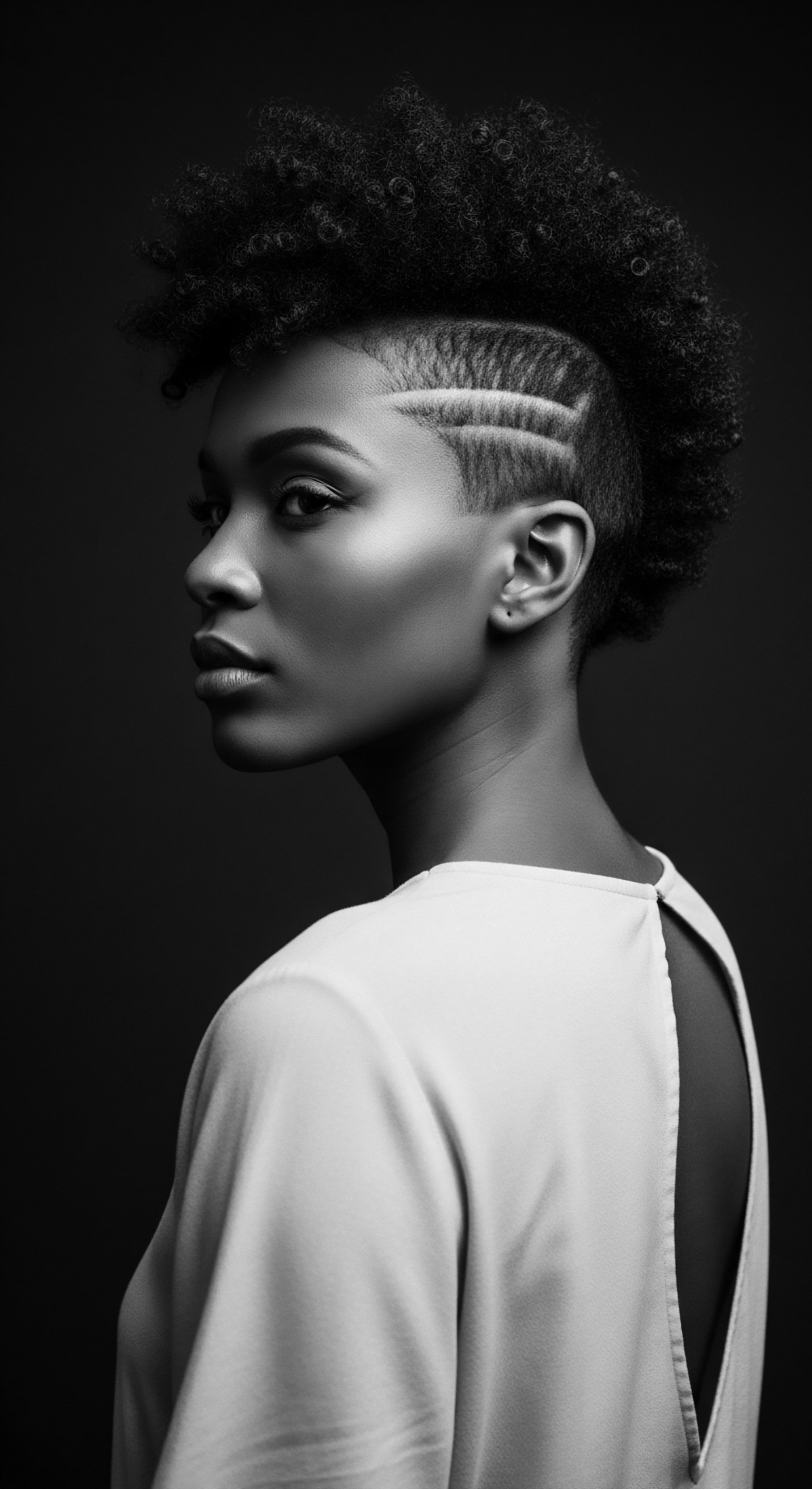
Ritual
The very concept of ritual in textured hair care carries the echo of generations, a tender thread connecting us to those who came before. From the ceremonial platting in ancient African courts to the intimate wash days in modern homes, the hands-on engagement with hair has always been a profound act of self-preservation and cultural continuity. The CROWN Act now stands as a formal recognition of these styling practices, upholding the dignity of ancestral methods that have, for too long, been unjustly maligned.
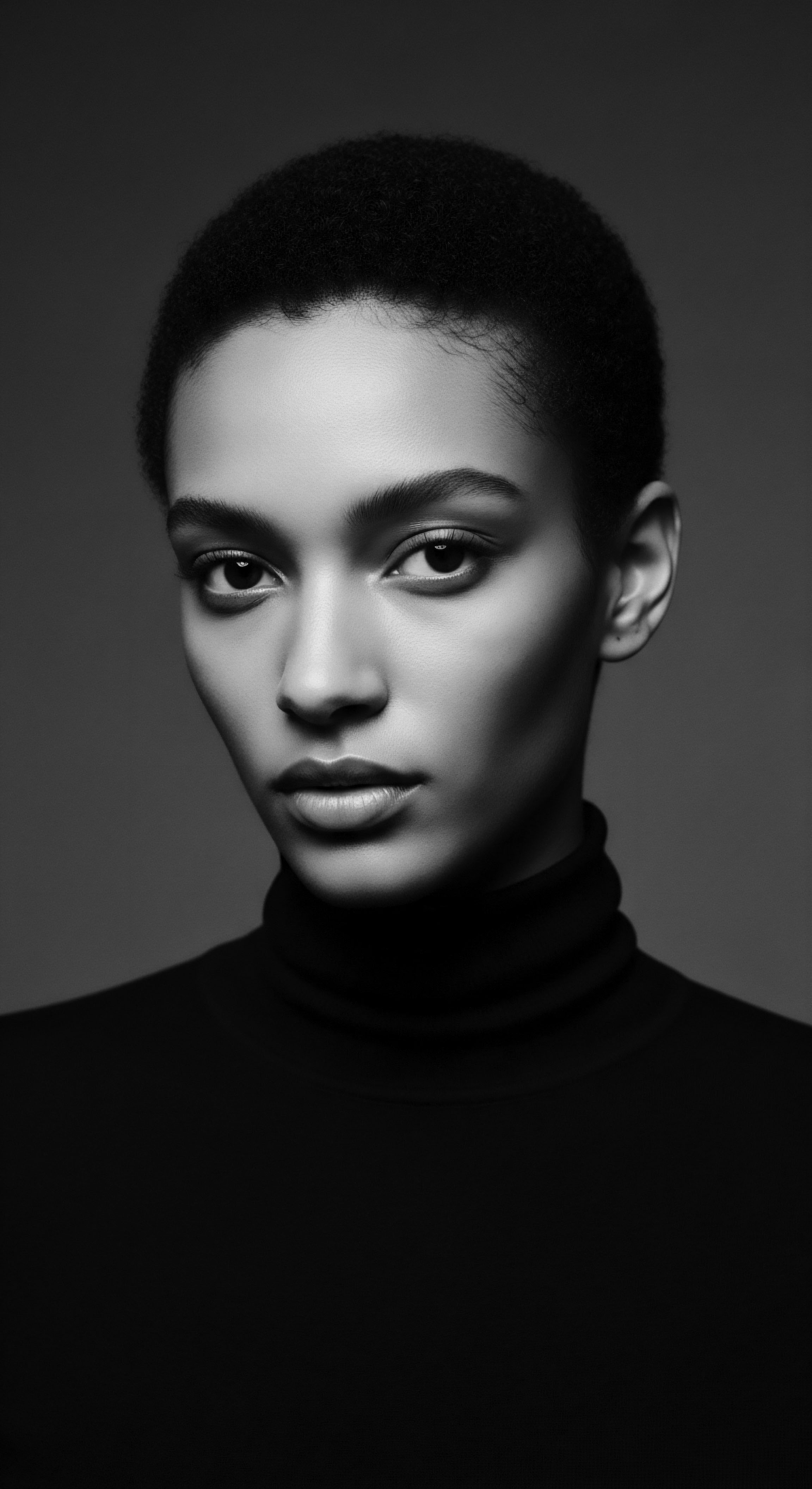
How do Protective Styles Carry Ancestral Memory?
Protective styles, such as braids, twists, and locs, represent more than a styling choice; they are an intricate lexicon of ancestral wisdom. Their origins span thousands of years, with archaeological evidence pointing to braiding techniques dating back to 3500 BC in Namibia (BLAM UK CIC, 2022). These styles were initially crafted for practical purposes ❉ to protect hair from the elements, to denote tribal affiliation, or to signify life stages. During the transatlantic slave trade, their purpose shifted dramatically.
Cornrows, for instance, became clandestine maps, guiding paths to freedom, with rice seeds sometimes braided into hair as a means of survival (BLAM UK CIC, 2022). This adaptation underscores the deep ingenuity and survival instinct embedded in hair practices. The very patterns held stories, coded messages, and the unwavering hope for liberty (Creative Support, 2021). Thus, wearing these styles today is a living commemoration, a quiet act of remembering and honoring that painful yet resilient heritage.
The journey of natural styling and definition techniques also speaks to this continuity. Traditional methods, often passed down through family lines, prioritized nourishing ingredients and gentle manipulation. The rhythm of detangling, moisturizing, and styling became a shared communal act, especially among women (Okan Africa Blog, 2020).
These rituals were, and still are, moments of bonding, storytelling, and the transmission of cultural knowledge from elders to younger generations (Obé, 2024). The CROWN Act recognizes these culturally significant styles, pushing against a history where they were deemed “unprofessional” or “unruly,” allowing their inherent grace and cultural weight to be seen and respected.
The CROWN Act provides a legal shield, allowing textured hair to reclaim its rightful place as a symbol of beauty, heritage, and identity without fear of systemic reprisal.
Even practices like the use of wigs and hair extensions , though sometimes viewed through a modern lens, possess historical and cultural roots. In ancient Egypt, wigs were worn for adornment, protection, and status (Safo Hair, 2024). While the context shifted dramatically with enslavement, where some Black women wore headscarves to protect scalps or hide untended hair, the ingenuity of altering hair’s appearance remained. The CROWN Act’s scope extends to protective styles that may incorporate extensions, recognizing that these, too, are often chosen not to assimilate but to protect and honor ancestral hair, or simply for aesthetic expression within a broad cultural spectrum.

What is the Cultural Trajectory of Styling Tools?
The history of hair tools parallels the journey of textured hair itself. The afro comb , or afro pick, dates back over 7,000 years to ancient civilizations like Kush and Kemet (Sudan and Egypt today), often decorated with symbols of nature (Africa Rebirth, 2022). These were not merely detangling tools but status symbols and decorative elements worn proudly in the hair (Africa Rebirth, 2022). The continuity of these tools, from ancient bone and wood to modern materials, underscores a persistent tradition of care.
The hot comb , while a product of post-slavery adaptation to Eurocentric beauty standards, also became a tool of economic empowerment for Black women like Madam C.J. Walker (Ohio State University, 2021). The CROWN Act, in its essence, allows for the liberation from the historical pressure to conform using such tools, empowering individuals to choose methods that align with their authentic hair heritage.
The CROWN Act affirms the legitimacy of traditional Black hairstyles in professional and educational settings. This stands as a direct counter to the historical and ongoing discrimination faced by Black individuals who wear their hair in culturally significant styles. For example, a 2019 study by Dove found that Black women are 1.5 times more likely to be sent home from the workplace because of their hair, and 80 percent reported feeling they needed to change their hairstyle to align with conservative standards to fit in at work (Legal Defense Fund, 2020). The CROWN Act directly addresses this pervasive issue, ensuring that ancestral styling practices are no longer a barrier to opportunity.
The complete textured hair toolkit, therefore, must be understood as a collection of instruments both ancient and contemporary, each carrying its own story. It comprises everything from the ancestral comb to modern conditioners, each element playing a part in the ritual of care and expression. The CROWN Act acknowledges that the choice of tools and styles is deeply personal and cultural, and ought to be free from discriminatory judgment.
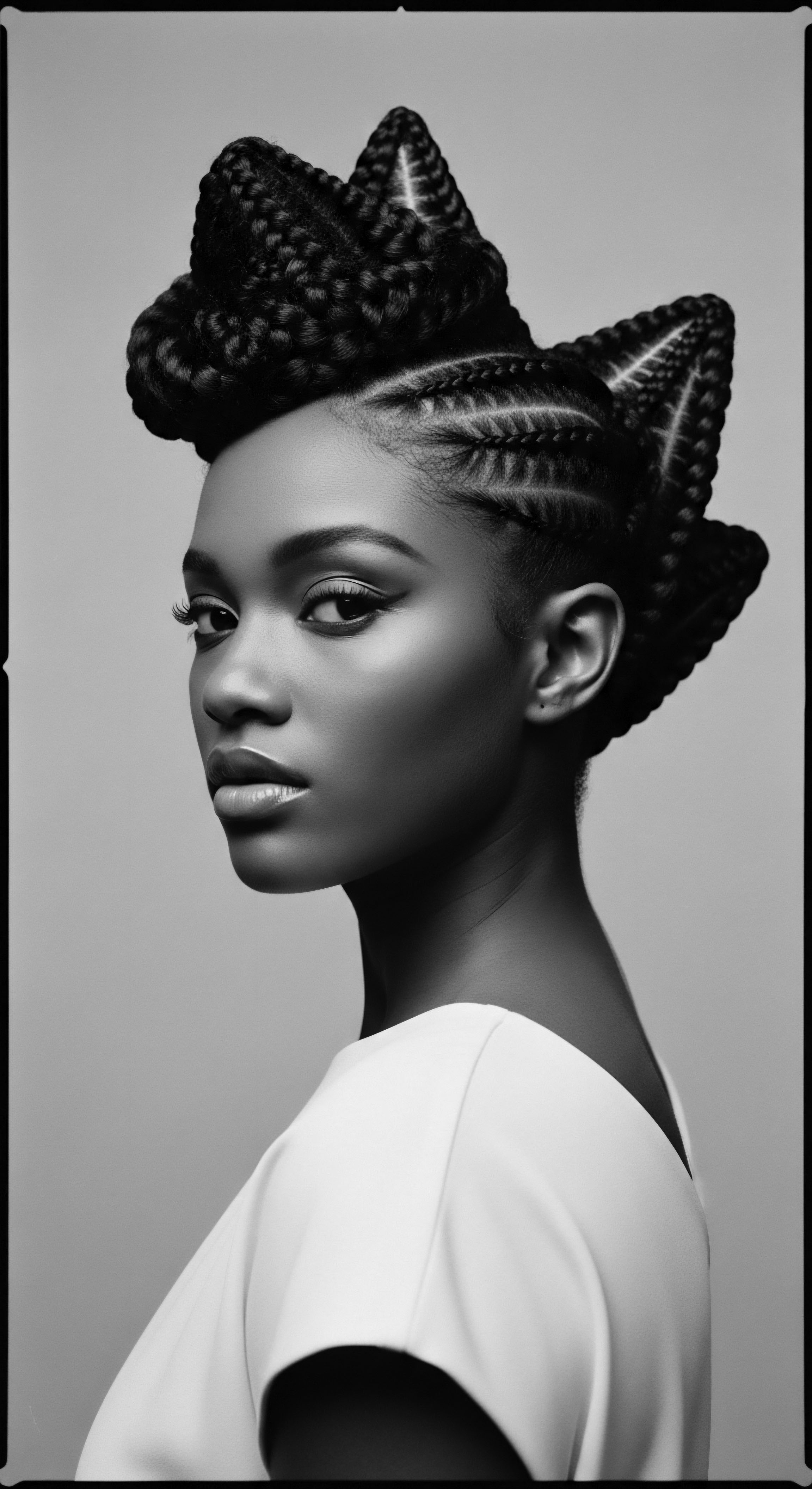
Relay
The CROWN Act, in its legislative framework, extends an invitation to reconnect with ancestral wisdom, transforming hair care into a living, breathing regimen that honors heritage. It does not simply prohibit discrimination; it creates space for the flourishing of self-acceptance and wellness, rooted in the deep knowledge passed down through generations. This is a profound shift, enabling individuals to approach their textured hair not as a challenge to be conquered, but as a cherished aspect of their being, worthy of a holistic, culturally informed care approach.
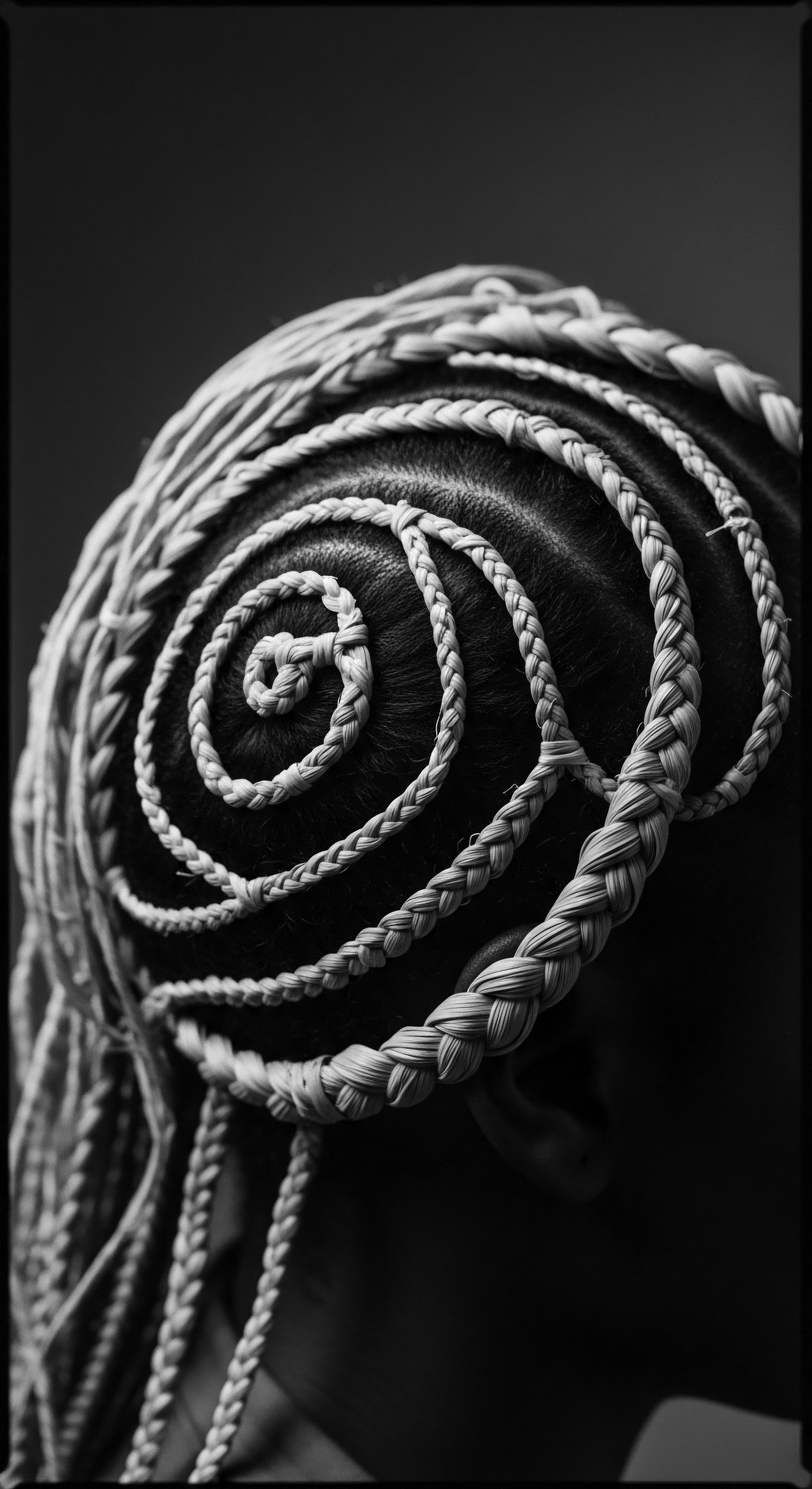
How can Ancestral Wisdom Guide Contemporary Hair Regimens?
Building a personalized textured hair regimen today draws directly from ancestral wisdom, blending it with modern scientific understanding. Historically, hair care practices in African communities were deeply integrated with nature, utilizing readily available botanical resources. Ingredients like shea butter (for moisture and sealing), castor oil (for scalp health and growth support), and various herbal infusions were staples, used for their medicinal and beautifying properties long before commercial products existed.
These practices often involved communal gatherings, where knowledge about ingredients, techniques, and hair health was shared, becoming a vital part of community life (PsychoHairapy, 2024). The CROWN Act helps to legitimize the choice to embrace these natural, heritage-based approaches without fear of professional or social repercussions, thereby empowering individuals to curate routines that resonate deeply with their lineage.
The concept of the nighttime sanctuary for textured hair is a prime example of ancestral wisdom influencing modern practice. Covering hair at night, often with a bonnet or scarf, is a practice deeply rooted in historical necessity and cultural significance. Beyond preserving styles and minimizing friction, this ritual has ties to beliefs about hair as a spiritual conduit that required protection, particularly during sleep (Okan Africa Blog, 2020).
The bonnet , a seemingly simple accessory, thus carries a quiet power, connecting wearers to a legacy of care and protection passed down through generations. The Act ensures that this cultural practice, and the healthy hair it promotes, is not viewed as unprofessional or an impediment to success.
The CROWN Act fosters an environment where the wisdom of ancient hair practices can openly inform modern self-care, bridging historical rituals with contemporary identity.

What Role do Traditional Ingredients Play in Modern Care?
A deep dive into ingredients for textured hair needs underscores the enduring efficacy of ancestral choices. Many traditional ingredients are now validated by modern science for their specific benefits. For instance, the natural oils and plant extracts used for centuries provided not just moisture but also vital nutrients and protective barriers against environmental stressors (PsychoHairapy, 2024).
These components of traditional care contrast sharply with some historical practices of forced conformity, which often involved harsh chemicals that damaged hair and scalp (McLane Middleton, 2023). The CROWN Act implicitly supports a move towards healthier, more aligned hair care, as it removes the external pressure to chemically alter hair for acceptance.
The problem-solving compendium for textured hair, from managing dryness to minimizing breakage, frequently finds its answers in these long-standing traditions. Ancestral methods focused on moisture retention , gentle handling , and protective styling , strategies that remain the pillars of healthy textured hair care today. The CROWN Act indirectly supports this, as it reduces the perceived need for straightening or other damaging practices driven by discriminatory standards, allowing individuals to prioritize the intrinsic health of their hair rather than external conformity.
Holistic influences on hair health, drawing from ancestral wellness philosophies, recognize that hair is not isolated from the body or spirit. Stress, nutrition, and emotional well-being all directly influence hair vitality. Many African cultures viewed hair as an extension of one’s spiritual well-being and a symbol of personal power (Odele Beauty, 2021). Thus, hair care became an act of self-love, a connection to the divine.
The CROWN Act, in its broader scope, contributes to this holistic framework by validating self-expression through hair, reducing the systemic stress and psychological burden associated with discrimination. When individuals feel affirmed in their authentic selves, including their natural hair, their overall well-being flourishes.
This integration of ancestral wisdom with contemporary understanding forms the basis for a truly respectful and effective approach to textured hair. It is a dialogue between past and present, a celebration of inherited knowledge, and a pathway to future wellness. The CROWN Act, through legal protection, provides a crucial foundation for this dialogue to continue, unobstructed.

Reflection
The passage of the CROWN Act, in its various state and proposed federal forms, signifies a collective turning of the tide, a momentous step in a journey that has stretched across continents and centuries. It is not merely a piece of legislation; it stands as a societal affirmation of the profound heritage embodied in textured hair. This act acknowledges that the coils, kinks, and waves are not simply biological structures, but living narratives of survival, spirit, and community.
The systemic pushback against Black and mixed-race hair, historically rooted in efforts to dehumanize and erase identity, finds its legal counter in the CROWN Act, providing a formal protection for an aspect of self that has too often been policed and punished. It is a recognition that dignity in appearance extends beyond Eurocentric norms, embracing the rich diversity of human expression.
When we look upon textured hair, we see more than strands; we see a luminous library of shared experience, a testament to enduring strength. The CROWN Act helps preserve this library, ensuring that the wisdom of ancient practices, the stories of resilience from eras of oppression, and the vibrant expressions of contemporary identity can continue to be written and read without fear. It allows individuals to wear their ancestral journey openly, proudly, fostering a profound sense of self-acceptance and collective empowerment. This legal framework contributes to a world where every strand can indeed feel its ‘Soul of a Strand,’ connected to its deep past and unburdened in its present, shaping a more equitable and celebratory future for all.

References
- Africa Rebirth. (2022, April 18). The African Tales of The Historical 7000 Year Old Afro Comb.
- BLAM UK CIC. (2022, September 15). The history of Black Hair.
- Creative Support. (2021, February 22). 6 Things Everyone Should Know About Black Hair History.
- Koch, S. L. Tridico, S. R. Bernard, B. A. Shriver, M. D. & Jablonski, N. G. (2019). The biology of human hair ❉ A multidisciplinary review. American Journal of Human Biology, 32(2).
- Legal Defense Fund. (2020, December 1). Hair Discrimination FAQ.
- McLane Middleton. (2023, April 19). Understanding Hair Discrimination and the CROWN Act.
- Obé. (2024, September 19). Braids of connection ❉ The tradition and community of Black hair.
- Odele Beauty. (2021, February 22). 6 Things Everyone Should Know About Black Hair History.
- Ohio State University. (2021, November 19). The Crown Act ❉ The history of hair. YouTube.
- Okan Africa Blog. (2020, October 8). The significance of hair in African culture.
- PsychoHairapy. (2024, December 18). Our Hair ROOTS ❉ Incorporating our Black Family Hair Traditions and Routines as a Coping Technique to Increase Positive Mental Health.
- Safo Hair. (2024, February 7). Unveiling the Significance of Hairstyles in Black Communities.
- Shepherd, J. M. (2018). Don’t touch my crown ❉ Texturism as an extension of colorism in the natural hair community. Unpublished Master’s Thesis, Texas State University.
